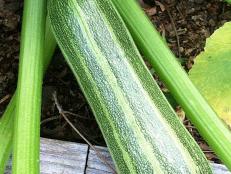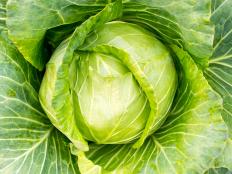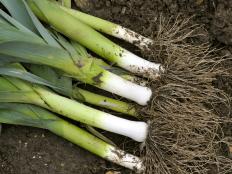Growing Butternut Squash
Get our tips on growing butternut squash, including when to plant butternut squash and techniques on harvesting and curing.
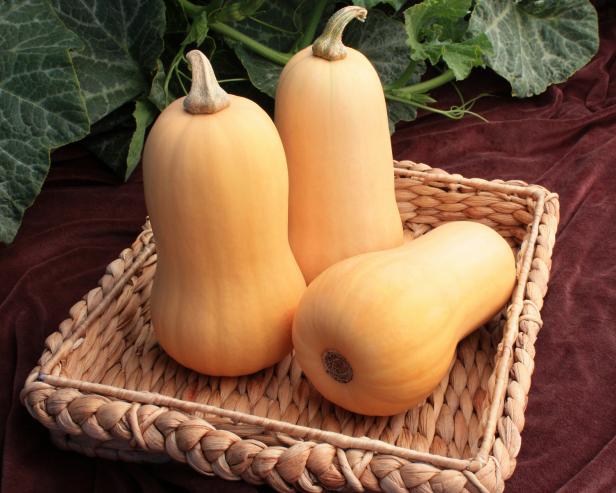
Courtesy of Sakata Home Grown

There’s something especially satisfying about growing shelf-stable food crops in a humble home garden. Winter squashes like butternut are rewarding plants because they produce delicious, nutrient-dense food that can be stored at room temperature for months after picking. Jump in to learn about butternut squash basics, including techniques for planting, growing, harvesting, curing and enjoying butternut squash.
From late summer through winter, farmers' markets are filled with the curvy shapes of butternut squash, as well as acorn, kabocha, delicata and other winter varieties. Butternut squash (Cucurbita moschata) belongs to the Cucurbit family, along with summer squash, cucumbers, pumpkins and melons. Unlike their quicker-growing cousins, winter squashes gradually develop hard skin and dense, sweet flesh over the course of the growing season.
20 Incredible Squash Varieties 20 Photos
How many types of squash can you name? Summer or winter, add one of these colorful varieties to your garden.
A tender annual, butternut squash is planted after the last frost. While summer squash is harvested throughout the season, butternuts are picked late in the growing season and cured for long-term storage. Butternut squash plants are vining, so they must be given a trellis to climb or space to spread. They require ample sunlight, rich fertility and frequent watering.
Because butternut can be cured for shelf storage, you can enjoy your harvest from fall through winter and also pick immature squashes in summer to prepare like zucchini. Keep reading to learn tips for enjoying this nutritional and culinary powerhouse in your garden and kitchen — and get ready for a bumper crop!
When to Plant Butternut Squash
Butternut squash is a hot weather lover, suffering in soil cooler than 60 degrees. Seed packets may tell you to plant right after the last frost, but it’s better to wait a week or two for soil temperatures to warm, according to Gayla Trail’s Grow Great Grub.
Butternut squash has a long growing season — around four months to maturity, depending on the variety. If your zone has shorter summers, get a head start by germinating seeds indoors two to four weeks before your last frost. Harden off seedlings before transplanting into warm soil. If your summers are long, direct seed once soil temperatures surpass 60 degrees.
How to Plant Butternut Squash
Butternut squash relishes full sun. Find a place where the vines can either grow vertically or sprawl across the ground. Rich soil with fluffy, water-retentive, well-draining structure is best. Amend the soil with organic matter like compost or leaf mold and provide a layer of mulch after planting to retain moisture and boost microbial activity.
Many resources advise planting butternut squash in a mound or hill to help ensure soil around the seeds is warm and well-draining. Use your hands to press the soil into mounds, spacing the mounds according to your seed packet. If you are confident that your soil is sufficiently warm and well-draining, you may skip mounding.
Johnny’s Seeds highlights the varied spacing needs of butternut squash, depending on the cultivar. Plan on 18-24 inches spacing for smaller butternuts, and 36-48 inches spacing for larger ones. Seeds should be planted about an inch deep, grouping two to three seeds together. After germination, thin to one robust seedling. Water after sowing to jumpstart germination.
When transplanting seedlings, handle root balls delicately. To reduce stress, water seedlings while they’re still in pots and again after planting. Plant one seedling per mound at your variety’s recommended spacing. Sometimes nursery plants will flower early due to stress; if your seedlings already have buds, pinch them to refocus plants on developing healthy roots.
Growing Butternut Squash
Butternut squash vines grow vigorously once the weather warms in early summer. Vines quickly become loaded with flowers, and as those flowers get pollinated, fruits will begin to develop. Butternut squash starts green and then slowly turns peachy-orange over the course of the growing season. It’s helpful to label different varieties of winter squash when you plant them — certain types like acorn and kabocha mature to deep green while others turn yellow or orange. Make sure you know what color your variety is supposed to be at harvest time so you don’t pick it too early.
While mid-season winter squashes aren’t yet sweet or storable, they can be used like summer squash, according to Southern Exposure Seed Exchange. Unlike summer squash, butternut is resistant to squash vine borers. If you’re tired of stressing over sick summer squash plants, hack the system by tapping into butternut squash’s versatility.
Butternut Squash Trellis Ideas
Vertical structures lend space for butternut squash vines to climb and lift fruits off the ground, reducing rot. Many trellis structures can work for winter squash; just remember that each vine carries at least 10 pounds of fruit by late summer. If you have several vines on one trellis, that’s a heavy load.
Instead of twine or plastic netting, heavy-duty supports like cattle panel or wooden grids can support butternut squash until harvest. The Creative Vegetable Gardener highlights three cattle panel trellis designs that are perfect for winter squash. Here, The Rusted Garden demonstrates both light and heavy duty trellises in his garden, including a thrifted wooden ladder that would be perfect for squash — and quite a conversation piece.
Watering and Fertilizing Butternut Squash Plants
Butternut squash needs ample water and nutrition to produce a peak harvest. Installing drip irrigation helps keep roots hydrated while preventing fungal disease. When hand watering, direct the shower towards the roots rather than the leaves.
Upon planting, incorporate a balanced, organic fertilizer like Espoma Garden Tone or Dr. Earth Home Grown according to package instructions. Both products contain beneficial microbes to support soil health — the surest way to grow happy plants. If your garden space is new, perform a soil test to detect deficiencies and pH level. Your local extension service can help with a test.
Buy Growing Supplies
Pruning Butternut Squash
There are several schools of thought about pruning winter squash. Horticulture Magazine encourages gardeners to let their space guide the strategy. If you have room, let squash ramble, training the vines to your liking to produce maximum yield. If you’re concerned about a squash takeover, use pruners to keep vines tidy. Some gardeners cut the entire plant back by one-third a couple times a season. Other growers snip the ends of vines to keep them in bounds. When snipping vines, cut back to two or three leaf nodes beyond the last fruit. Some swear that pruning yields higher quality (if fewer) fruits.
Pest and Disease Management for Butternut Squash
Members of the Cucurbit family are susceptible to a range of pests, including squash bugs, vine borers and cucumber beetles. Luckily, Cucurbita moschata is resistant to the notorious squash vine borer that plagues summer squash. If you want some insurance for keeping pests at bay, cover young seedlings with a floating row cover. Or, place a plastic cup with the bottom cut off around each plant to offer some protection.
Disease-wise, butternut squash may suffer from downy mildew, powdery mildew, bacterial wilt and phytophthora. Ensuring proper air flow and soil drainage — as well as crop rotation — are key to avoiding disease. Cooperative extension agents are helpful resources for identifying diseases and finding solutions.
Boosting Butternut Squash Pollination
If you notice vines loaded with flowers but few fruits, Gayla Trail recommends taking pollination into your own hands. First, learn to differentiate between male and female flowers: Female blooms have a tiny undeveloped squash right behind the flower while male blooms have longer, straight stems. To manually aid pollination, pick a male flower and peel the petals back, revealing pollen. Then, gently brush the center of the female flower with the pollen. University of Georgia’s Cooperative Extension recommends using cotton swabs to transfer the pollen.
Small Space Strategies for Butternut Squash
Butternut squash is not naturally suited to small spaces. The vines are quick-growing and widely sprawling, full of huge fruits. While plants start out looking beautiful, they must be left to mature until the vines start to brown, indicating squash ripeness — at this point, ornamental value is low.
However, there are still options for small-space gardeners. North Carolina Cooperative Extension recommends that home and community gardeners select varieties that are bred to produce smaller, 1.5-2-pound fruits. They highlight several varieties: Butternut 900, Butterfly, Butterscotch, Honeynut and Metro. Check seed packets for vine length; commercial varieties may reach 40 feet long, which would overpower most gardens quickly.
For container gardening, try the early, dwarf variety Burpee’s Butterbush, which matures in 75 days and produces four to five fruits per plant. Gayla Trail recommends using containers with a depth of at least 14-16 inches for winter squash. Self-watering containers help maintain moisture through the season. Fabric grow bags are effective options for big producers like butternuts.
When to Harvest Butternut Squash
Picking Butternut Squash
When fruits have full color and the vines have mostly browned in late summer or early autumn, it’s time to pick butternut squash. To check readiness, try making a dent in the skin with your fingernail. If the skin gives, it’s not ready. If the skin is firm under your fingernail and shows no damage, the squash is fully mature. Use pruners to snip butternut squash off the vine, leaving about an inch of stem intact. Get your harvesting done before the first hard frost.
How to Cure Butternut Squash
Curing butternut squash ensures several months of shelf stability at room temperature. After harvesting, move squashes to a warm, sunny outdoor space and let them sit for about a week. Sunbathing helps the skin dry and the sugars fully develop. Larger butternuts are best eaten after a month or two of curing and storage, while smaller fruits like Honeynut or Butterscotch PMR can be eaten immediately and should be consumed within a few months. Johnny’s Seeds has a helpful chart on curing.
Enjoying Butternut Squash
Butternut Squash’s Nutritional Benefits
Butternut squash is high in vitamins A and C, and rich in fiber and potassium. WebMD also highlights butternut squash’s power to support immunity, hydration, blood pressure and eye health. Butternut squash has a low glycemic index, so it’s a great way for those with diabetes to enjoy a filling, naturally sweet flavor without a blood sugar spike.
Cooking with Butternut Squash
The sweet, nutty flavor of butternut squash is a staple of fall and winter cooking. Try cutting small butternuts in half, scooping out the seeds and then browning them (cut side down) in a pan before roasting in the oven. This pan-frying step, recommended by Carla Lalli Music in her book Where Cooking Begins, lends a rich, caramelized flavor to the squash.
Butternut Squash Recipes
Butternut squash is a fantastic candidate for batch cooking — that is, prepping a large amount at once to use throughout the week. Try peeling, cubing and roasting squash in the oven until cooked through. Store squash in the fridge and use it to add satisfying depth to salads, grain or noodle bowls, and alongside proteins.
Using Butternut Squash Seeds
Cooking with butternut squash, you’ll scoop out lots of seeds. Fruition Seeds describes how to roast the seeds for snacking and use them for crafts and wildlife. Saved squash seeds are unlikely to grow true-to-type, so enjoy them other ways.
Preserving Butternut Squash
In addition to curing, butternut squash may be pureed or blanched and frozen for longer enjoyment. Use frozen butternut squash in soups, sauces, curries, baby food and smoothies. PennState’s Cooperative Extension offers tips for safe preservation.







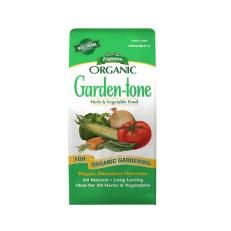
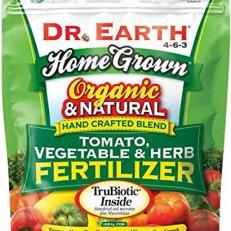
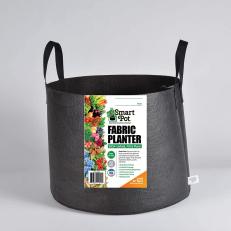
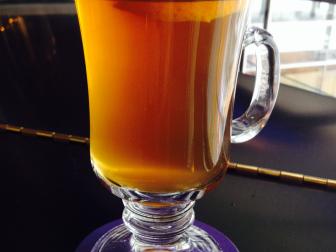

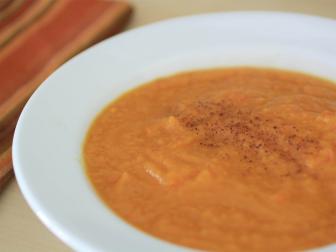
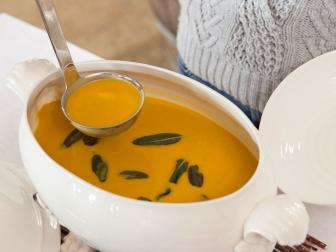

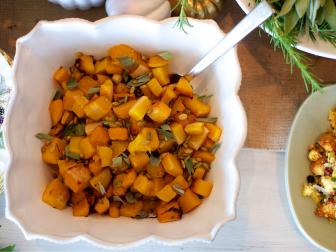
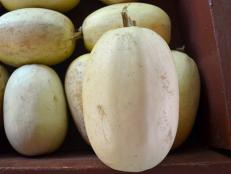

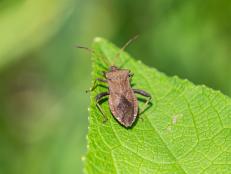
![Homegrown variety of winter squash. Homegrown winter squash. 195956_3603429601142_787136137_n[2].jpg](http://hgtvhome.sndimg.com/content/dam/images/grdn/fullset/2014/2/7/0/195956-3603429601142-787136137-n-2.jpg.rend.hgtvcom.231.174.suffix/1452646912247.jpeg)
